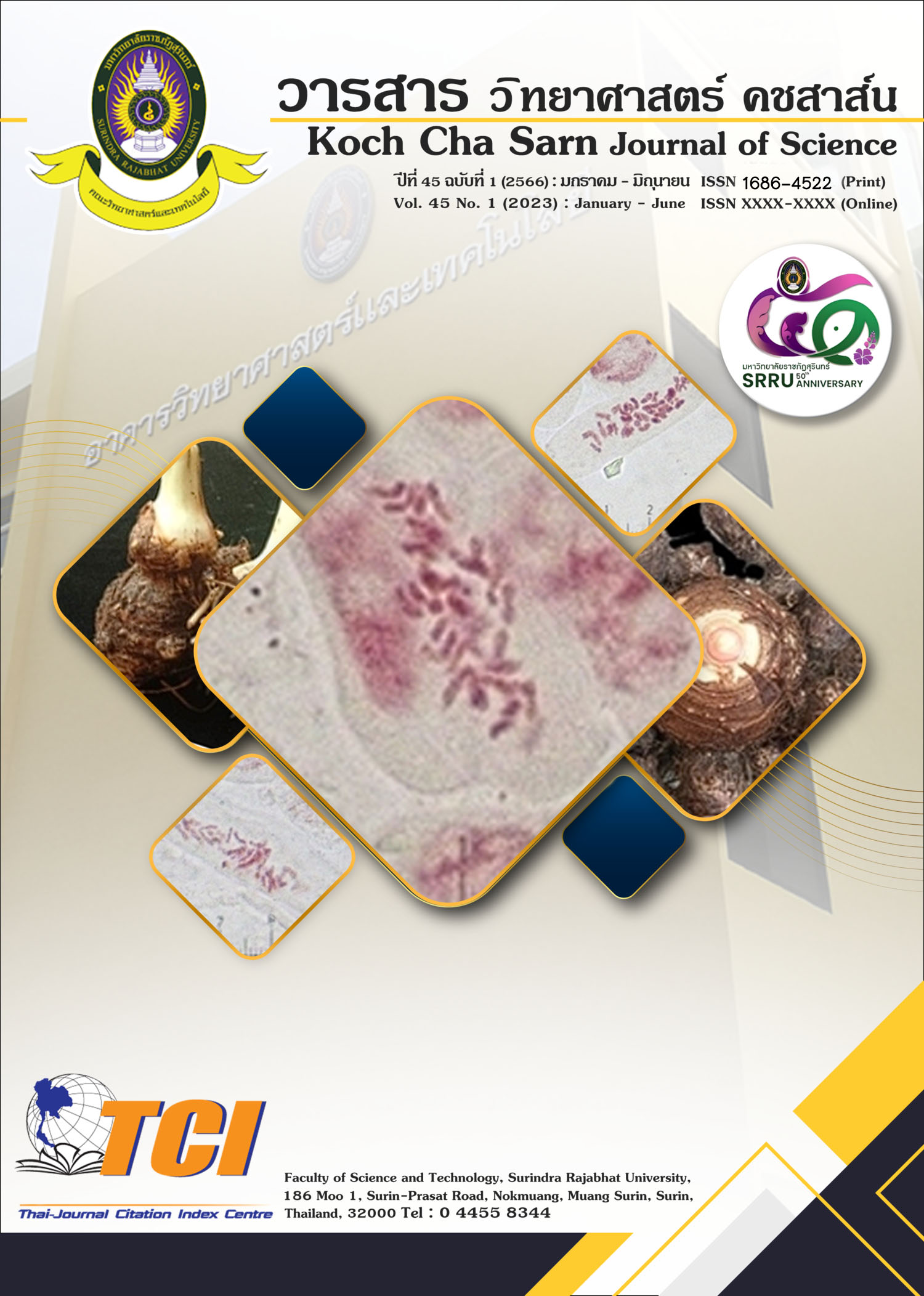Chromosome Number of Cultivated Local Taro (Calocasia esculenta (L.) Schott) in Surin Province, Thailand
Keywords:
Chromosome Number, Native Taro, Surin ProvinceAbstract
This research aimed to study chromosome number and classify cultivated taro in Surin of 7 strains, namely Trow Sla (Pheuk Mag), Trow Gon (Pheuk Loog), Trow Kyong Gahom (Pheuk Hoy Deang), Trow Gamoon (Pheuk Tean), Trow Poang Laloa (Pheuk Khai Nog Khao), Trow Khmoa (Pheak Dum), and Trow Pa Am (Pheuk Whan). Apical root meristem of each taro were study somatic chromosome number using Acetocarmine Squash Technique.
The result revealed that there are two kinds karyotype of taro; diploid (2n=28) and triploid (3n=42). Three strains of Surin cultivated taro has chromosome count of 2n=28, namely Trow Sla, Trow Pa Am and Trow Khmoa. These three strains were dasheen cultivated type. In addition, four strains of Surin cultivated taro has chromosome number of 3n=42, namely Trow Gon, Trow Kyong Gahom, Trow Gamoon, and Trow Poang Laloa. These four strains were eddoe cultivated type.
Downloads
References
Quach M L, Melton L D, Harris P J, Burdon J N, Smith B G. Cell Wall Compositions of Raw and Cooked Corms of Taro (Colocasia esculenta). J of the Science of Food Agriculture. 2003;81(3):311-318.
Onwueme I. Taro Cultivation in Asia and the Pacific. Senior Plant Production and Protection Officer, FAO Regional Office for Asia and the Pacific, Bangkok, Thailand. 1999.
Mulualem T, Weldemichael G, Bekele K B. Genetic Diversity of Taro (Colocasia esculenta (L.) Schoot) Genotypes in Ethiopia based on Agronomic Traits. Time J of Arts and Educational Research. 2013;1(2):23-30.
Tsuchiya T, Kakamura C. Acetomarmine Squash Method for Observing Sugar Beet Chromosomes. Euphytica. 1979;28(2):249-256.
Ivancic A, Lebot V. The Genetics and Breeding of Taro [Internet]. 2000. [cited 2019 June 14]. Avilable from: https://books.google.co.th/books.
Singh D, Mace E S, Godwin I D, Mathur P N, Okpul T, Taylor M. Assessment and Rationalization of Genetic Diversity of Papua New Guinea Taro (Colocasia esculenta) using SSR DNA Fingerprinting. Genetic Resource and Crop Evolution. 2007;55(6):811-822.
Das A B, Das A, Pradhan C, Naskar S K. Genotypic Variations of Ten Indian Cultivars of Colocasia esculenta var. antiquorom Schott. evident by Chromosomal and RAPD Markers. Caryologia. 2015;68(1):44-54.
Banjaw D T. Review of Taro (Colocasia esculenta) Genetics and Breeding. J of Horticulture. 2017;4(1):1-4.
Ahmed I. Evolutionary Dynamics in Taro (Colocasia esculenta L.). [Doctoral Dissertation]. Massey University, Palmerston North, New Zealand. 2014.





